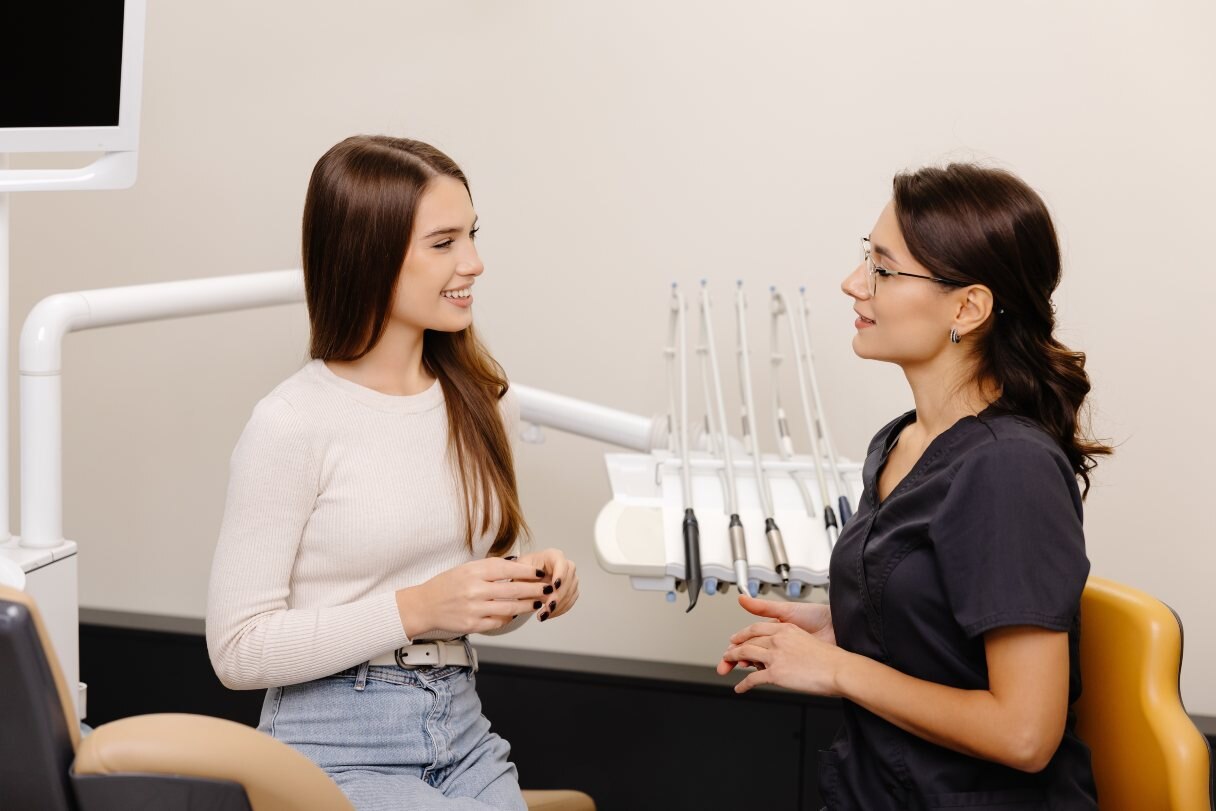11 Ways to Help Reduce Dental Patient No-Shows and Cancellations
Are missed appointments wreaking havoc on your schedule? Learn how to help reduce no-show rates and boost the efficiency of your dental practice.
By Robyn Tellefsen
Digital Writer
Posted Aug 15, 2025 - 9 min read

Around 8 out of 10 dentists say last-minute patient cancellations or no-shows is the top reason their practice can’t maintain a full schedule, according to a 2023 American Dental Association survey.1 Not only can this disrupt your dental office’s workflow, it can also lead to lost revenue and delayed care, which can negatively impact patients’ health.2
The good news? There are proactive steps your dental practice can take to minimize patient no-shows and cancellations. Keep reading to discover common reasons for these disruptions — and practical strategies to help reduce them.
Why Do Patients Cancel Dental Appointments?
To find effective solutions, it helps to understand the nature of the problem. Consider these reasons patients may cancel or miss dental appointments:3
- Anxiety or fear. Patients may be nervous about a dental procedure or recall a negative experience.
- Emergencies. Patients may have legitimate reasons to cancel, such as unexpected urgent needs.
- Financial concerns. They may worry about how much treatment costs or lack clarity on what their insurance covers.
- Forgetfulness. They may forget about the appointment or even double-book themselves, creating scheduling conflicts.
- Perceived lack of urgency. Patients may be busy and fail to understand the importance of their appointments and their oral health.
Tips to Reduce Appointment No-Shows and Cancellations
Once you determine the most common causes of appointment cancellations and no-shows in your practice, you can pursue targeted solutions to address them. Here are some practical strategies.
1. Improve appointment scheduling
Reducing patient no-shows and cancellations starts with effective scheduling. Try these tips to improve appointment scheduling in your dental office:
- Offer flexible scheduling. Consider offering extended hours, such as early morning, evening or weekend appointments. This kind of convenience and flexibility may encourage patients to keep their appointments.3
- Provide time estimates. For longer exams or procedures, provide patients with an estimate of the length of time you’ve reserved for them. This may help them prepare to fit the appointment into their schedule.4
- Require immediate confirmation. Ask patients to confirm their appointment right away to reinforce the importance of the appointment in their minds and reduce the chance of a no-show.2
Pro Tip: An online scheduling portal can make it easy for patients to adjust their appointments to fit their schedule, which may lead to fewer cancellations.2
2. Leverage reminder systems
Reminder systems can be one of the most effective ways to help your practice reduce patient no-shows and last-minute cancellations.5 Consider these factors in your appointment reminders:
- Automation. Use practice management software to automate your phone, text and email reminders and help ensure all messages are delivered.
- Frequency. Send reminders a month, a week and a day beforehand to help patients keep their appointments top of mind.
- Personalization. Personalize your messages with the patient’s name and specific appointment details to catch their attention and make your reminders more helpful.
- Preferred method. Use the patient’s preferred method of communication or a backup channel in case of failed delivery.
Pro Tip: Text messages that require a confirmation can be more difficult to ignore than a voicemail.6
3. Prioritize pre-appointment education
If you want to motivate patients to keep their appointments, clearly explain the importance of dental treatment and emphasize how regular oral healthcare can lead to good overall health.7 You can also explain the long-term health problems that may result from delayed care.3
In addition, be sure to let patients know what to expect during their appointment and encourage them to contact your office with any questions. This may help reduce last-minute cancellations due to uncertainty about the details or importance of the care they’ll be receiving.5
Pro Tip: Take advantage of appointment confirmations and reminders to provide patient education.
4. Enhance the patient experience
Focusing on the overall patient experience can be a great way to reduce no-show rates. How can you do that? By prioritizing excellent customer service and patient communication. Commit to keeping flexible hours, providing online portals for forms and appointments and reducing wait times to help ensure convenience and show patients you value their time.6
If unavoidable delays have you running behind schedule, train your staff to apologize to patients waiting more than a few minutes — and consider sending a personal letter of apology to anyone kept waiting more than 20 minutes. This kind of personal attention can foster a positive relationship, which in turn can help patients feel more invested in keeping their appointments.6
Pro Tip: If you consistently value your patients’ time, they may be more likely to value yours.8
5. Provide perks
Consider implementing a loyalty rewards program to help boost patient engagement and motivate patients to keep their appointments. For example, you might offer a 30% discount off teeth-whitening services for every three appointments they keep, or you could provide freebies like electric toothbrushes or entry into a drawing for a free cleaning. Patients may be more likely to show up for appointments if they know they’ll be rewarded.8
Pro Tip: Send seasonal promotions or expiring benefits reminders to motivate busy patients to prioritize their dental appointments.
6. Present clear financial communication and solutions
Before appointments, communicate details about patients’ insurance coverage and estimated financial responsibility so they can properly plan for care. You might also encourage cost-conscious patients to keep their appointments so any oral health issues don’t necessitate more extensive (and expensive) treatment down the line.
Consider these practical tips to facilitate dental patient payment:
- Promote prepayment. Encouraging deposits or partial payments for certain types of dental appointments, such as high-value procedures, may help patients commit to care and reduce the likelihood of no-shows. You might offer a discount to motivate patients to take advantage of this option.
- Offer multiple payment options. Presenting a variety of payment options, such as flexible financing, can make it easier for patients to move forward with care. For example, the CareCredit credit card is a financing solution that offers patients a way to pay over time with convenient monthly payments* — while your practice gets paid within two business days.
- Provide digital payment solutions. To help ensure a convenient payment experience, consider giving dental patients the option to pay through an online patient portal or a scannable QR code. The CareCredit credit card is set up for an easy digital application and payment process using a QR code or custom link.
Pro Tip: Providing a clear explanation of dental patient financing and payment options can help patients prioritize their oral health.3
7. Address dental anxiety
About a third of young children around the world experience dental fear and anxiety.9 That figure may be even higher when considering people of all ages.10 Your goal? To make the experience as comfortable as possible and help set patients at ease. Here are some ideas to consider:
- Before any procedure, explain what you will do and demonstrate the instruments involved.
- Consider teaching patients guided imagery or breathing techniques.
- Discuss costs and payment options early on to help alleviate any cost-related anxiety associated with the dental visit.
- During the procedure, describe what you’re doing before you take the next step.
- Consider whether it might be appropriate to offer medication to help them get through the procedure without being fully sedated.
- Remind patients that they are in control. If they have any pain or sensitivity — or they just need a break — tell them to raise their hand and you will stop.
Pro Tip: Proactively addressing a patient’s concerns can help boost their commitment to attending their appointment.2
8. Communicate a clear cancellation policy
Patients are more likely to keep their appointments if they understand that you expect them to be there.7 Consider this sample cancellation policy:11
“If you find that you must change your appointment, we require a minimum of 24 hours’ notice so that we may make every effort to accommodate other patients. If proper notice is not received, a fee may be charged for every appointment canceled.”
Here are some tips for communicating your cancellation policy to patients:
- Add the policy to every new patient package.
- Display the policy in a prominent place.
- Have patients sign the policy to confirm their understanding.
- Include the policy on appointment confirmations and reminders.
Staff training is key here. Your team must apply the practice’s policies consistently while also assessing individual situations for exceptions such as emergencies or unforeseen circumstances. The goal: to minimize the impact of missed appointments while maintaining positive patient relationships.2
Pro Tip: Charging a fee for canceling with less than 24 or 48 hours’ notice may encourage patients to keep their scheduled appointments.7
9. Follow up on all missed appointments
Contact patients right after a missed appointment to communicate concern about their absence. Doing this can reinforce the importance of their oral health and encourage them to reschedule right away.6 Also, try to find out and note the reason for the missed appointment so you can track this key metric.
Then, consider rescheduling nonurgent appointments four to six weeks out instead of right away. This way, your practice can maintain its usual workflow and subtly encourage patients to keep future appointments.
Pro Tip: Online scheduling can simplify the rescheduling process and help reduce no-shows, making it easy for patients to see available appointments and rebook.2
10. Handle cancellation conversations proactively
For patients who habitually cancel appointments, kindly but firmly advise them that the time set aside for their appointment is part of a carefully planned schedule. Try these sample scripts when a patient calls to cancel:11
- “Ms. Smith, Dr. Martin recommended you complete treatment as soon as possible. Is there any possibility of your keeping today’s appointment? We don’t have any openings for [treatment] until [date of next available appointment].”
- “Mr. Lee, I’m sorry you won’t be able to keep your Saturday appointment with [hygienist’s name]. The next opening with [hygienist’s name] is not until [date]. Saturday appointments are very popular. Are you sure you can’t keep your appointment? Is there anything I can do to help you keep the appointment?”
Pro Tip: When appropriate, remind patients of the desired outcome of their treatment plan. This kind of positive reinforcement may decrease the chance of cancellation.6
11. Use data to refine strategies
Leverage practice management software tools to track patient behavior and identify trends in appointment cancellations or no-shows. Then, use this data for targeted interventions. For example, have you identified patients who are frequent no-shows? Consider double-booking their appointments. Are certain patients routinely late? Try scheduling them 30 minutes before their actual appointment so they arrive on time. Note that these solutions may require your practice to adapt and adjust the schedule on the fly.7
Pro Tip: Using data to garner insights into your no-show and cancellation patterns may help you minimize missed appointments and boost efficiency in your practice.2
Minimizing Missed Appointments
Patient no-shows and cancellations are a top challenge in dentistry, but it’s possible to minimize these disruptions. By taking steps such as improving scheduling, leveraging reminder systems, addressing dental anxiety and communicating clear policies, you can help reduce cancellations and no-shows — and enhance the patient experience.
A Dental Patient Financing Solution for Your Practice
Want to help more patients move forward with the dental care they want or need? Consider offering CareCredit as a financing solution. CareCredit allows patients to pay for out-of-pocket dental care costs over time while helping enhance the payments process for your practice.
When you accept CareCredit, patients can see if they prequalify with no impact to their credit score, and those who apply, if approved, can take advantage of special financing on qualifying purchases.* Additionally, you will be paid directly within two business days.
Learn more about the CareCredit credit card as a dental patient financing solution or start the provider enrollment process by filling out this form.
Author Bio
Robyn Tellefsen is a freelance writer and editor with more than 20 years of experience covering health and wellness, finance and more. Her work has appeared on sites such as LoopNet, Beachside Rehab, First Horizon Bank, SoFi, A Place for Mom, American Express, Chase and more.
Healthcare payment and financing solution
The CareCredit health and wellness credit card helps improve the payment experience for patients and clients, and your financial performance.
Get StartedReady to help more patients and clients get the care they want and need?
Get StartedReady to help more patients and clients get the care they want and need?
Get Started*Subject to credit approval.
The information, opinions and recommendations expressed in the article are for informational purposes only. Information has been obtained from sources generally believed to be reliable. However, because of the possibility of human or mechanical error by our sources, or any other, Synchrony and any of its affiliates, including CareCredit, (collectively, “Synchrony”) does not provide any warranty as to the accuracy, adequacy, or completeness of any information for its intended purpose or any results obtained from the use of such information. The data presented in the article was current as of the time of writing. Please consult with your individual advisors with respect to any information presented.
© 2025 Synchrony Bank.
Sources:
1 “Economic outlook and emerging issues in dentistry,” American Dental Association. December 2023. Retrieved from: https://www.ada.org/-/media/project/ada-organization/ada/ada-org/files/resources/research/hpi/dec2023_hpi_economic_outlook_dentistry_slides.pdf
2 Oromchian, Ali. “How to manage cancellations and no-shows in your dental office,” Dental & Medical Counsel. April 20, 2024. Retrieved from: https://www.dmcounsel.com/blog/how-to-manage-cancellations-and-no-shows-in-your-dental-office
3 Chakravarthi, Chandra. “How to reduce patient no-shows and cancellations?” RevenueWell. January 30, 2023. Retrieved from: https://www.revenuewell.com/article/reduce-patient-no-shows-by-patient-types
4 Traeger, Sarah. “4 tips for preventing dental patient cancelations,” Dental Claim Support. Accessed July 24, 2025. Retrieved from: https://www.dentalclaimsupport.com/blog/preventing-dental-patient-cancellations
5 “Seven easy steps to reduce cancellations in your dental practice,” Fortune. June 24, 2025. Retrieved from: https://www.fortunemgmt.com/post/seven-easy-steps-to-reduce-cancellations-in-your-dental-practice
6 “4 simple ways to reduce no-shows and cancellations,” DOCS Education. June 7, 2024. Retrieved from: https://www.docseducation.com/blog/4-simple-ways-reduce-no-shows-and-cancellations
7 “Patient cancellations,” American Dental Association. Accessed July 24, 2025. Retrieved from: https://www.ada.org/resources/practice/practice-management/cancellations
8 “Make dental no-shows a thing of the past with key strategies,” Healthcare Training Leader. August 19, 2024. Retrieved from: https://healthcare.trainingleader.com/2024/08/eliminate-dental-no-show/
9 Sun, Ivy Guofang et al. “Global prevalence of early childhood dental fear and anxiety: A systematic review and meta-analysis,” Journal of Dentistry. March 2024. Retrieved from: https://www.sciencedirect.com/science/article/pii/S0300571224000113
10 “Seven common questions on dental fear and anxiety,” CareQuest Institute for Oral Health. May 11, 2022. Retrieved from: https://www.carequest.org/about/blog-post/seven-common-questions-dental-fear-and-anxiety
11 “Cancellations,” American Dental Association. Accessed July 24, 2025. Retrieved from: https://www.ada.org/-/media/project/ada-organization/ada/ada-org/files/publications/guidelines-for-practice-success/mngpatients_cancellation-policy.pdf




